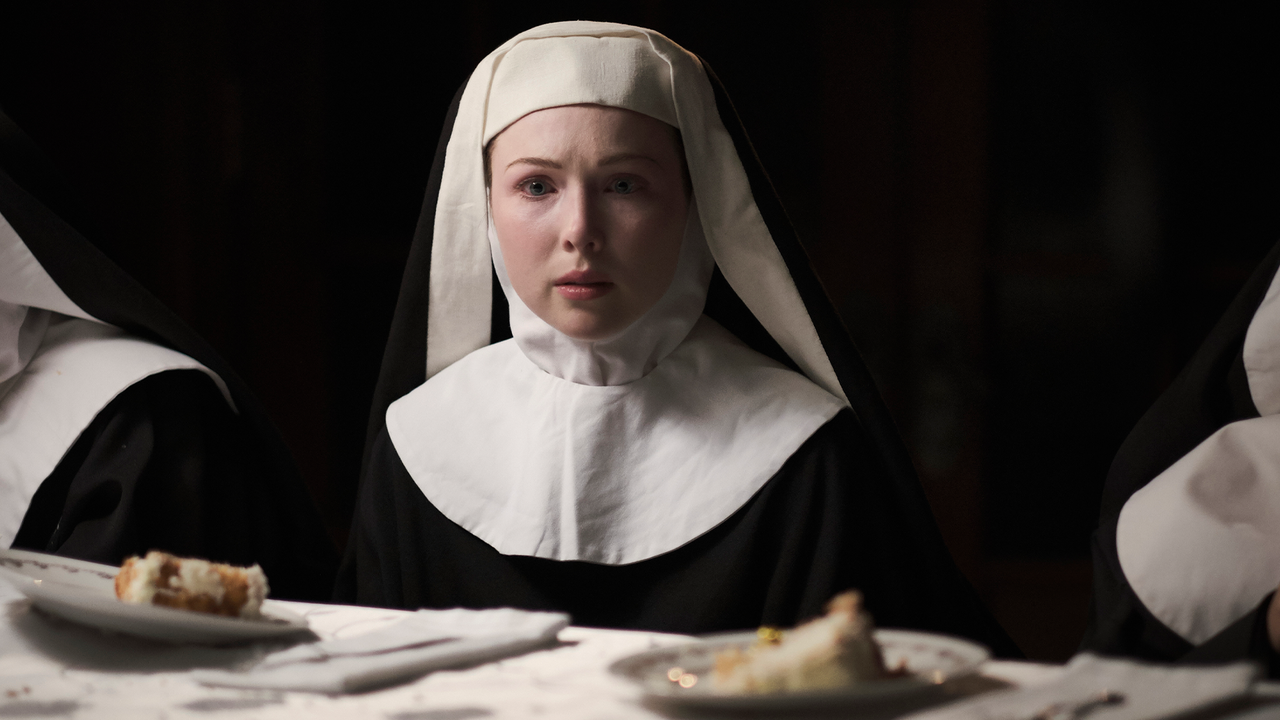
Film Review: Agnes
Film Reviews
Agnes
Director: Mickey Reece
Magnolia Pictures
Released in Theaters: 12.10
Loss is a universal pain that we all experience. Some find comfort in the potential brevity of all things, while others look to religion and God for reason and reassurance when we lose things important to us. Agnes, directed by Mickey Reece, explores this relationship between life, loss and religion—or rather, half of the film does.
The first half presents a fairly basic exorcism set-up: Sister Agnes (Hayley McFarland), a nun at an isolated convent, seems to be inhabited by an evil spirit. Father Donaghue (Ben Hall), a priest with exorcism experience, and Benjamin (Jake Horowitz), a priest-in-training, are sent to deal with the possible possession. Donaghue, played excellently by Hall, is a priest with doubts. He doesn’t believe in demons and practically begs Benjamin not to pursue a life devoted to God.
There’s a surprising amount of humor throughout the first half. From Catholic leaders laughing about the allegations against Donaghue (a bizarre moment early in the film that left me baffled in its meaning) to a nun saying “Oh my God, stop” when flattered, the film is clearly walking the line between horror and humor. It’s a tone that took a while to get used to, but once I was in it I was ready for more.
The funniest joke in the movie—and maybe my favorite part—is the character of Father Black (Chris Browning), an excommunicated priest whose introductory television interview had me laughing out loud. By the time Donaghue called in Father Black to help with the exorcism, the film had hit its halfway mark and cemented its tone as a tense, gory, horror comedy about an exorcism. And then there was Mary.
Throughout the first act we are also introduced to Mary (Molly C. Quinn), Agnes’s close friend at the convent. Quinn’s performance is great—particularly striking is her ability to convey emotion with just her eyes. Additionally, a conversation between Agnes and Mary about what they gave up to become nuns is one of the best moments in the script. Set after her initial exorcism when the demon within is lying low, the scene gives McFarland’s Agnes more to do than just scream and swear, and it works well as a grounding device in the story, too.
As the Sisters try to get a grip on the Agnes problem, Mary’s memories with Agnes are shown in a flashy, blink-and-you’ll-miss-them editing style. Images of the women smoking and laughing in their habits together are accompanied by shots featuring Sean Gunn (Gilmore Girls, Guardians of the Galaxy) and Chris Sullivan (This Is Us) in roles we have yet to see. Given the literal flashback nature of the sequences, it’s understandable you might think they’re memories from Mary’s past. But as Agnes’ exorcism reaches its peak in both intensity and intrigue, the film cuts to the future and doesn’t meaningfully look back as we meet both Gunn’s and Sullivan’s characters in Mary’s life after leaving the convent.
This second half of the story loses the momentum of the first. Without properly wrapping up the Agnes and Donaghue storylines (which were previously at the center of the narrative), we now follow Mary as she explores her new, dour life in the real world. She works for Sullivan’s creepy store manager Curly and starts a relationship with Gunn’s Paul Satchimo, a teacher-turned-comedian that used to date Agnes before she joined the convent.
The tone shifts severely in this half, dropping almost all of the comedy and horror in the name of exploring Mary’s hunt for meaning outside of her religion. The demonic influences linger in the story, but it’s unclear what threats—if any—they provide. This throws some vaguely scary ideas in the audience’s direction but mainly sticks to the quiet drama of the new story.
In the end, Reece’s script reaches a conclusion that wants to be thought provoking but comes across as poorly thought out. The distinct split at the middle of the narrative gives the impression that this is two stories, neither of which get a satisfying ending—a shame, as the first half’s apparent tongue-in-cheek approach to exorcisms, Catholicism and the horror genre had me fully engaged and ready for fun. –Max Bennion
